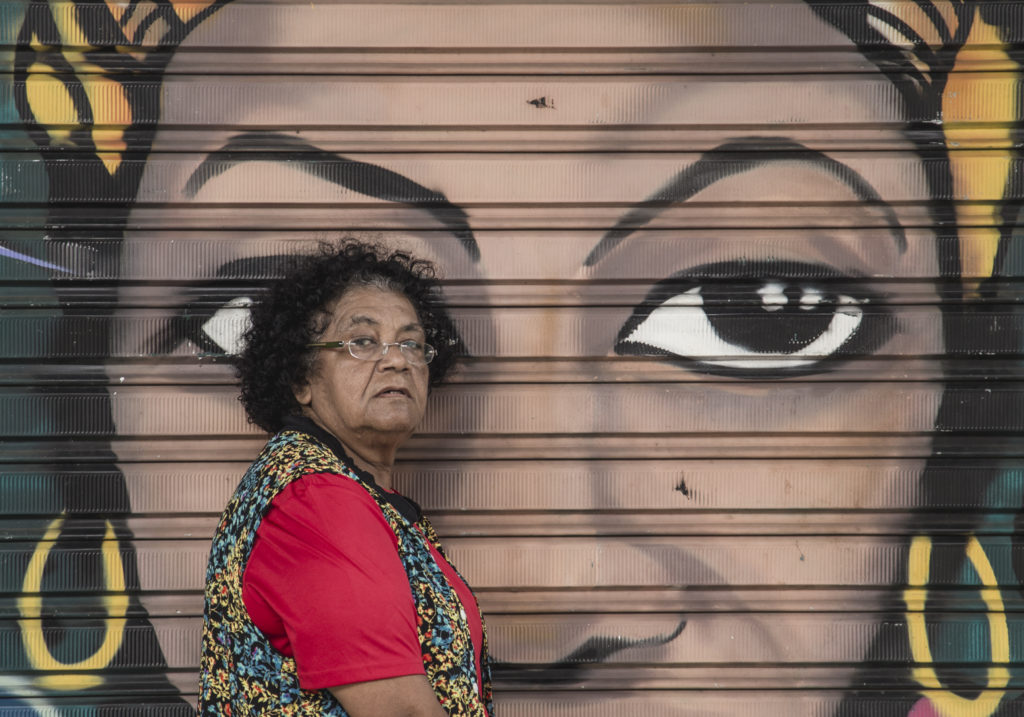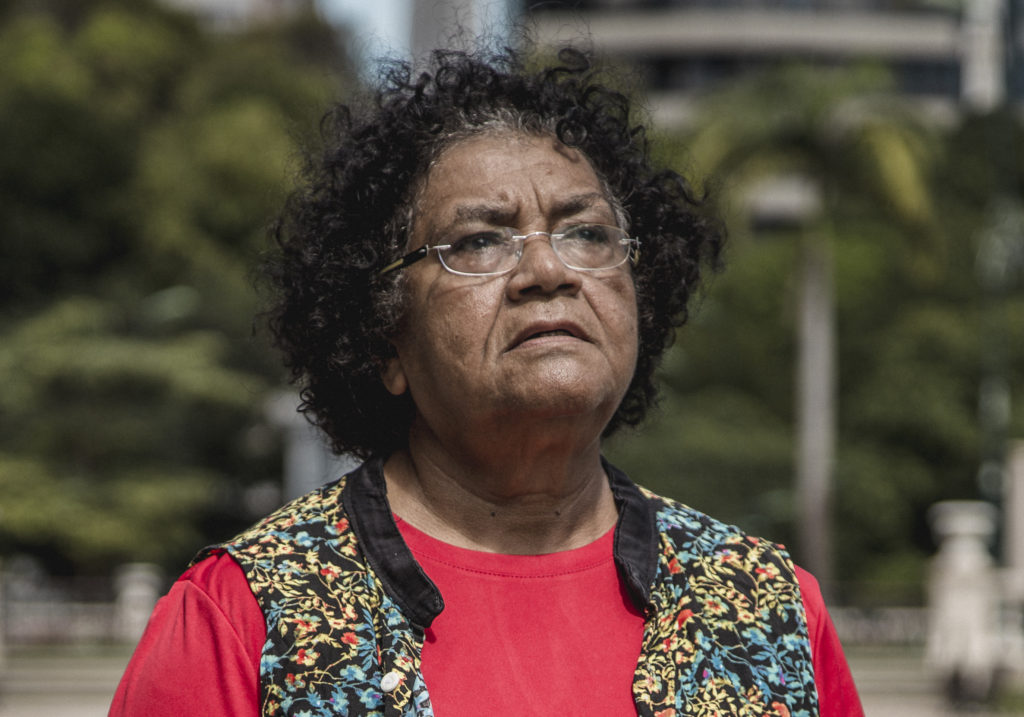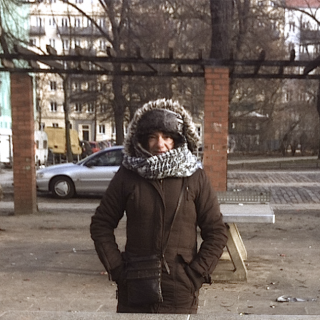It took four years of planning to show Brazil the strength of black women’s activism, but it paid off. During a march to Brasília in November 2015, 50,000 women occupied all six lanes of the avenue leading to the National Congress, Federal Supreme Court and Planalto Palace. There they were heard. “We were determined to continue even if it was only a hundred women,” recalls the 70-year-old activist from Pará, Raimunda Nilma de Melo Bentes.
Bentes, an agronomic engineer by training, is one of the founders of Centro de Estudos e Defesa do Negro do Pará (Center for the Study and Protection of Black People – Cedenpa) in Belém and the creator behind the Black Women’s March, which gave visibility to the struggle of people who are often, she says, constrained by the machismo of the black movement and the racism of the feminist movement. “Our march proved that we have overcome fear,” she says.
After more than four decades of civil rights struggle, Bentes can see the achievements of the black movement, such as racial quotas and delimitation of quilombola lands, but warns that there are many more obstacles to overcome. “I think one of the biggest challenges is still to make black people like being black, which means, basically, to completely overcome the ideologies of racial inferiority, racial democracy and the need for ‘whitening’ to be accepted,” she says during an interview with Believe.Earth.

Nilma Bentes says for her generation, social inclusion and mobility could only happen through study (Tereza Maciel and Aryanne Almeida/Believe.Earth)
Believe.Earth (BE) – How did racism influence your childhood and teenage years?
Nilma Bentes (NB) – I have felt racial prejudice since my childhood. My dad’s mother did not like black people. My mother warned us, but she did not tell us how to deal with it. My father and my grandmother were not black, and my mother suffered racism, but in silence. She used to tell us not to go to certain places, afraid that we would suffer racism or be accused of robbery. We were raised in a defensive stance.
My role models in the fight against racism came from sports. Cassius Clay, for example, who became Muhammad Ali [a politically outspoken American boxer, who is considered one of the greatest in the sport’s history]. Playing sports in high school was a way to defuse the tensions of the classroom. At that time, few black people went to school. My school was attended by many people from middle and upper class, that is to say, white people. I had to contain my inner revolt and had to respond to the conflicts within the classroom through good grades. Because, at that time, a black person who did not study was nothing. Until very recently, our few opportunities for social inclusion and mobility have been through study.
BE – How did you get involved with the black movement?
NB – I stopped straightening my hair after I left college, so I experienced more racism. It’s even complicated to explain. Stopping straightening my hair was an amazing thing for me: my blackness came out. But it was difficult because the corporate environment was not so friendly. I worked for a development bank [Banco da Amazônia S/A, from government and private resources] and, then, moved to work on rural projects. The environment was hostile, with few black people. I was the only black engineer in my industry. I had to keep to the straight and narrow in order not to risk my job.
At that time, the main Brazilian black role model I had was Abdias do Nascimento [a prominent black Brazilian scholar and politician], with whom I spoke a few times. There was little written material. I was (and am) somewhat self-taught and sought what was possible, including books written by white people such as Décio Freitas, Florestan Fernandes, Carlos Hasenbalg and Vicente Salles.
BE – How did Centro de Estudos e Defesa do Negro in Pará come about?
NB – In 1980, we organized a group to send a representative from Pará to participate in the discussions about the construction of Zumbi’s Memorial, in Serra da Barriga, Alagoas. We created Centro de Estudos e Defesa do Negro in Pará (Cedenpa) during the dictatorship, with great fear of repression. It was difficult to hold meetings at that time. We wanted to organize. So, we started holding meetings in a community center but needed to move several times because we were afraid. Often, we sought refuge in churches run by progressive priests.
Black women have always been very active in Cedenpa. Men who stayed were those who accepted women’s leadership. Black women are always caught between the machismo of the black movement, led by black men, and the racism of the feminist movement, led by white women. Despite such difficulties, we have achieved a great deal in recent decades. The current movement of black youth is very encouraging to a person like me, who, in my youth, had practically no paradigm.
BE – What was your role in the creation of the Black Women’s March?
NB – At that time, I was part of the coordination of Articulação de Organizações de Mulheres Negras Brasileiras (Brazilian Black Women’s Organizations – AMNB), which was the main driver of the march. I made the proposal, but other people created the march and were responsible for it. At first, most did not believe it would happen, but we were determined to continue even if it was only a hundred women. Eventually, many other organizations rolled up their sleeves and people made it happen. I did not expect such a large turnout. There was a pent-up demand, people who were not connected to any movement, but heard about the event and ended up taking part in it. The march proved that we have overcome fear. We want to change, but not from oppressed person to oppressor. We want equality, equity.

“I try to translate into simple language what happened in the Brazilian black population’s history,” says Bentes (Lais Tavares e Daiane Coelho/Brasil de Fato)
BE – How can we move forward in the defense of black rights and equality?
NB – We must fight together and simultaneously in all sectors – public policy, education, political formation, health and everything. I try to translate into simple language what happened in the Brazilian black population’s history. We do not have media, but a book can spread a great deal of information far and wide. I write the ABCs of the antiracist fight. They are not academic texts, because most of the black population is still in the low-income bracket, with a lower level of information and education; it is for this population that our efforts are directed. I try to create educational books for them.
Another strategy is to talk about domestic violence, because most black people do not want to know about racism, do not want to recognize themselves as black. The only thing that unites all women is domestic violence. When you bring up this issue, you can talk about racism in another way.
We are looking for strategic ways to make the black population feel more unified, to like themselves. It’s obvious that the black should not be defended only by the black, nor woman only by the woman. We know that there are black fascists, including in Africa. There are blacks who fight blacks and there are cruel women. There will never be unanimity, but we must honor our ancestors, those who made us to survive, to continue the struggle.
This content is part of Believe.Women, a series of interviews conducted by Believe.Earth in partnership with AzMina magazine and the Catarinas portal. Believe.Women supports and promotes SDG 5 (gender equality), and SDG 10 (reducing income inequalities).
Published on 03/04/2018



